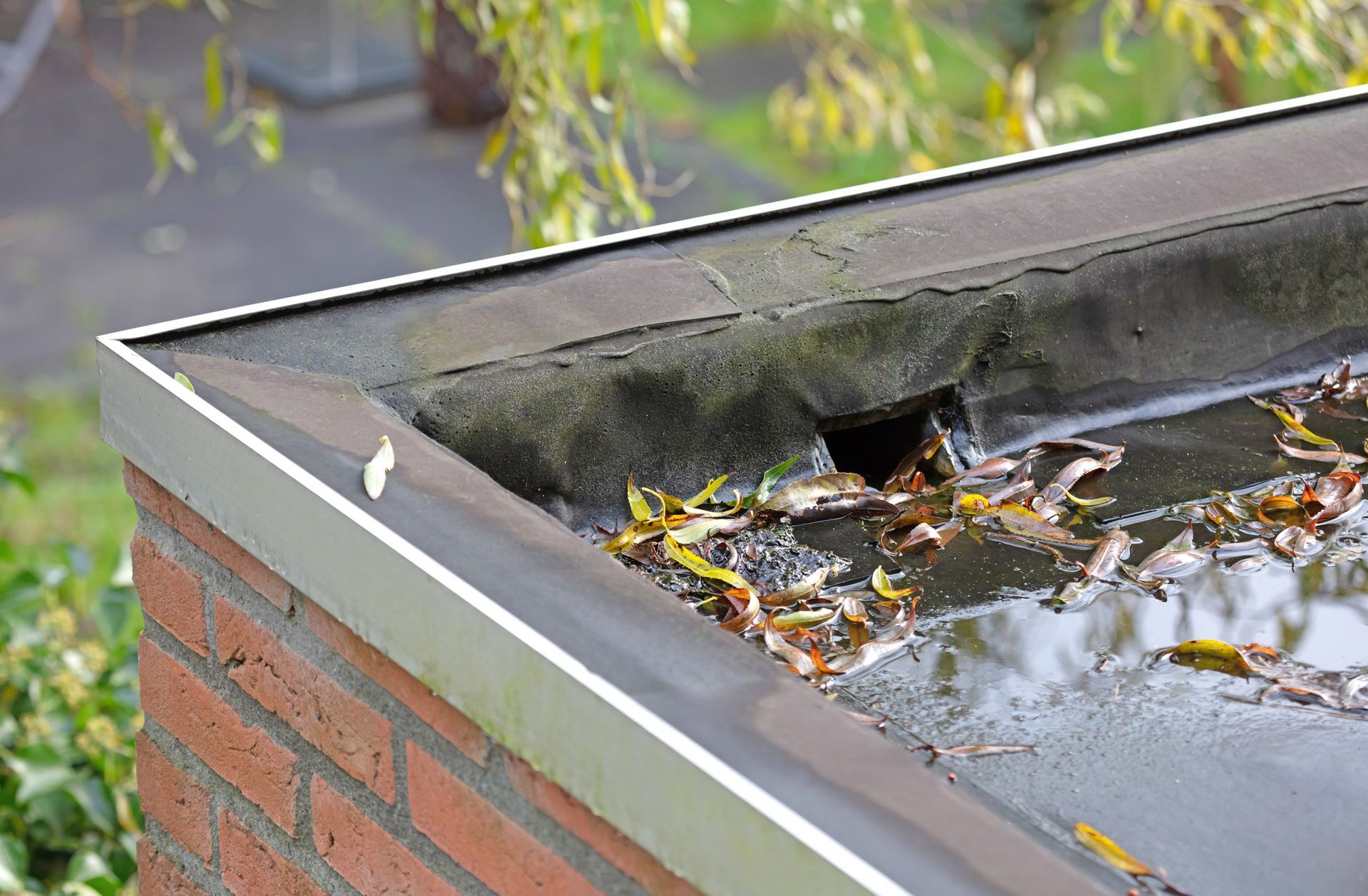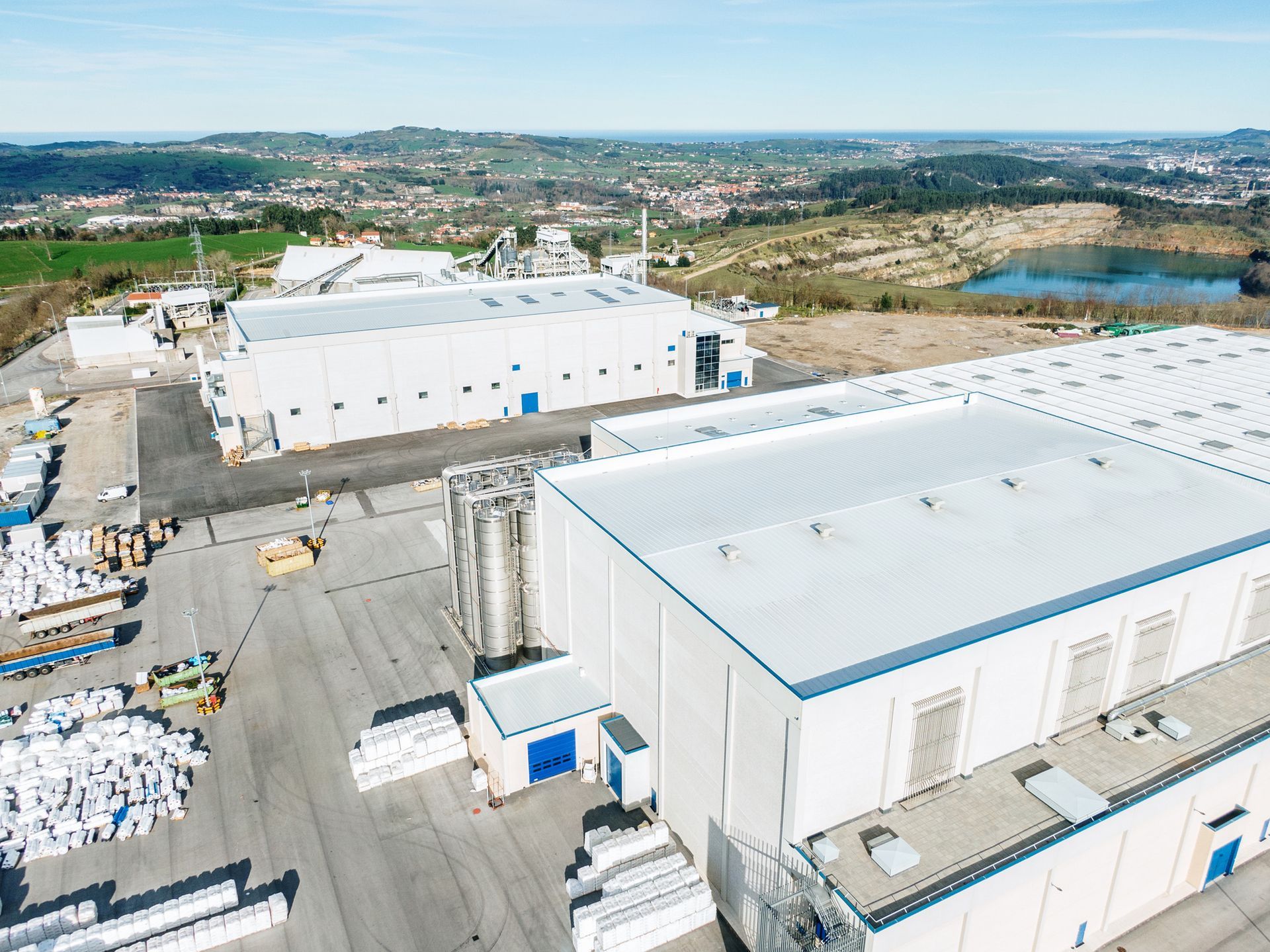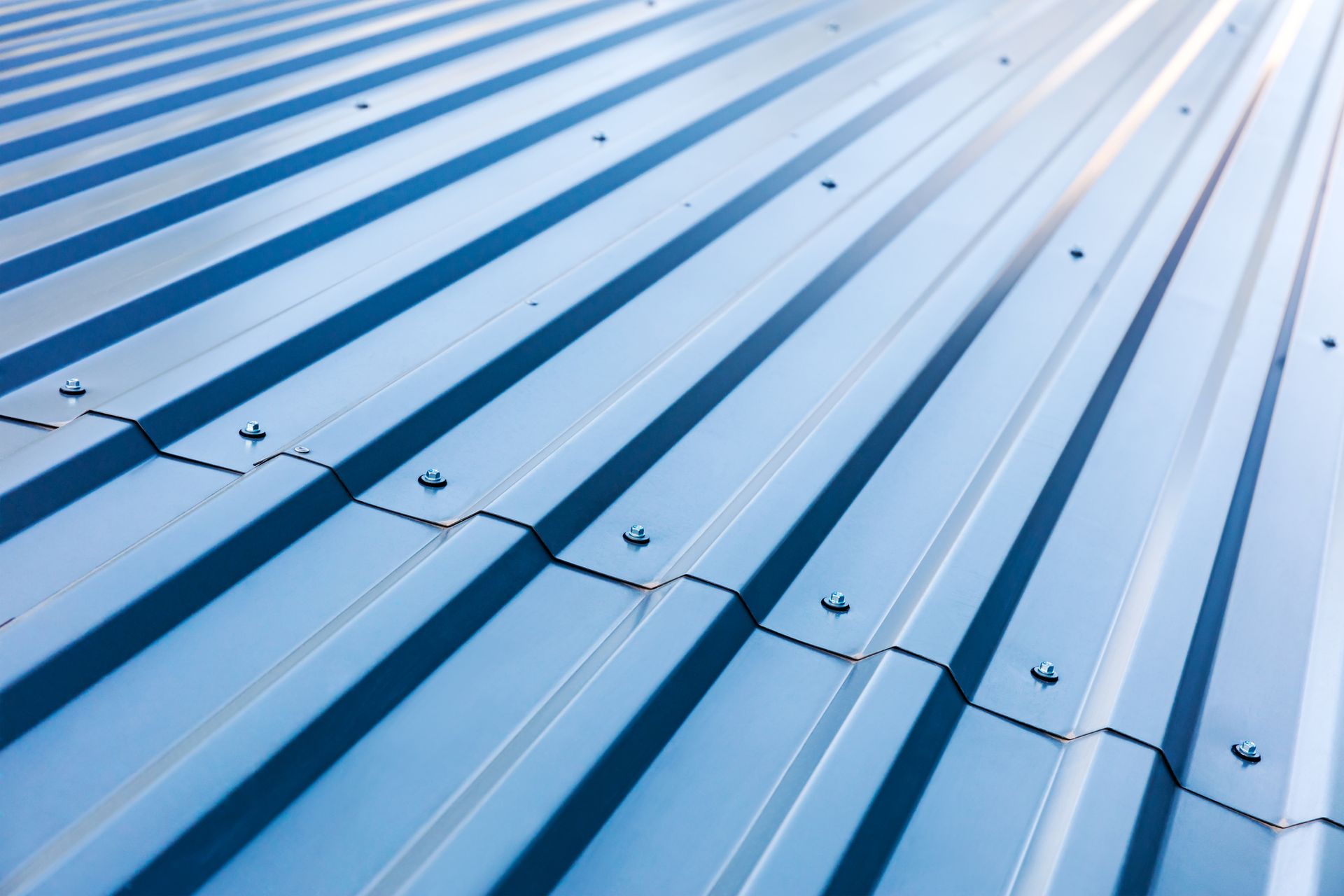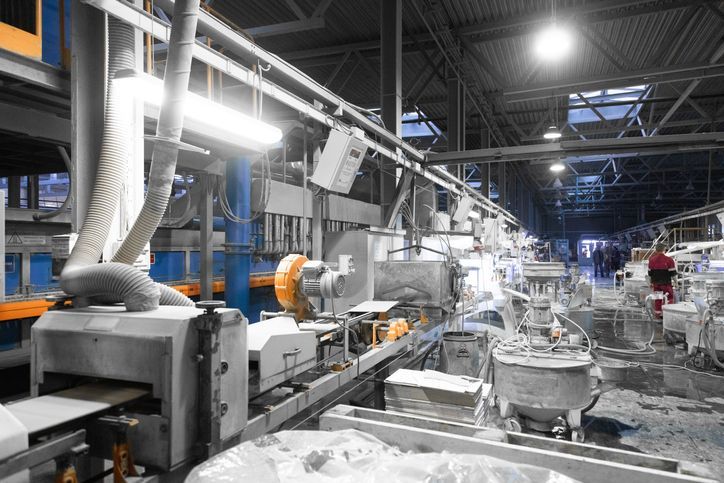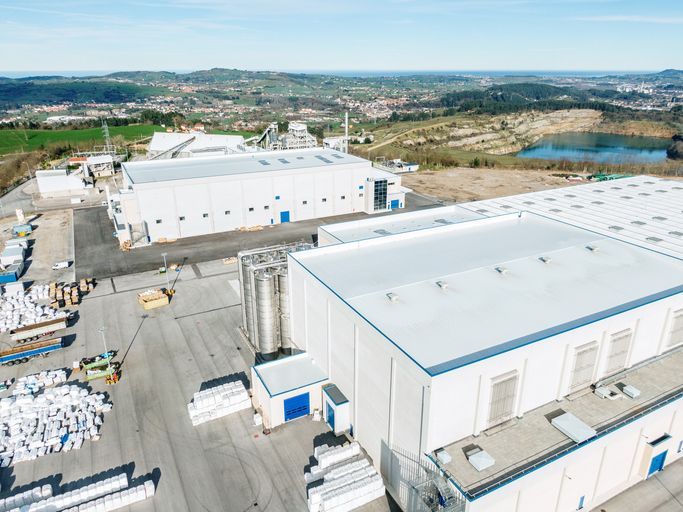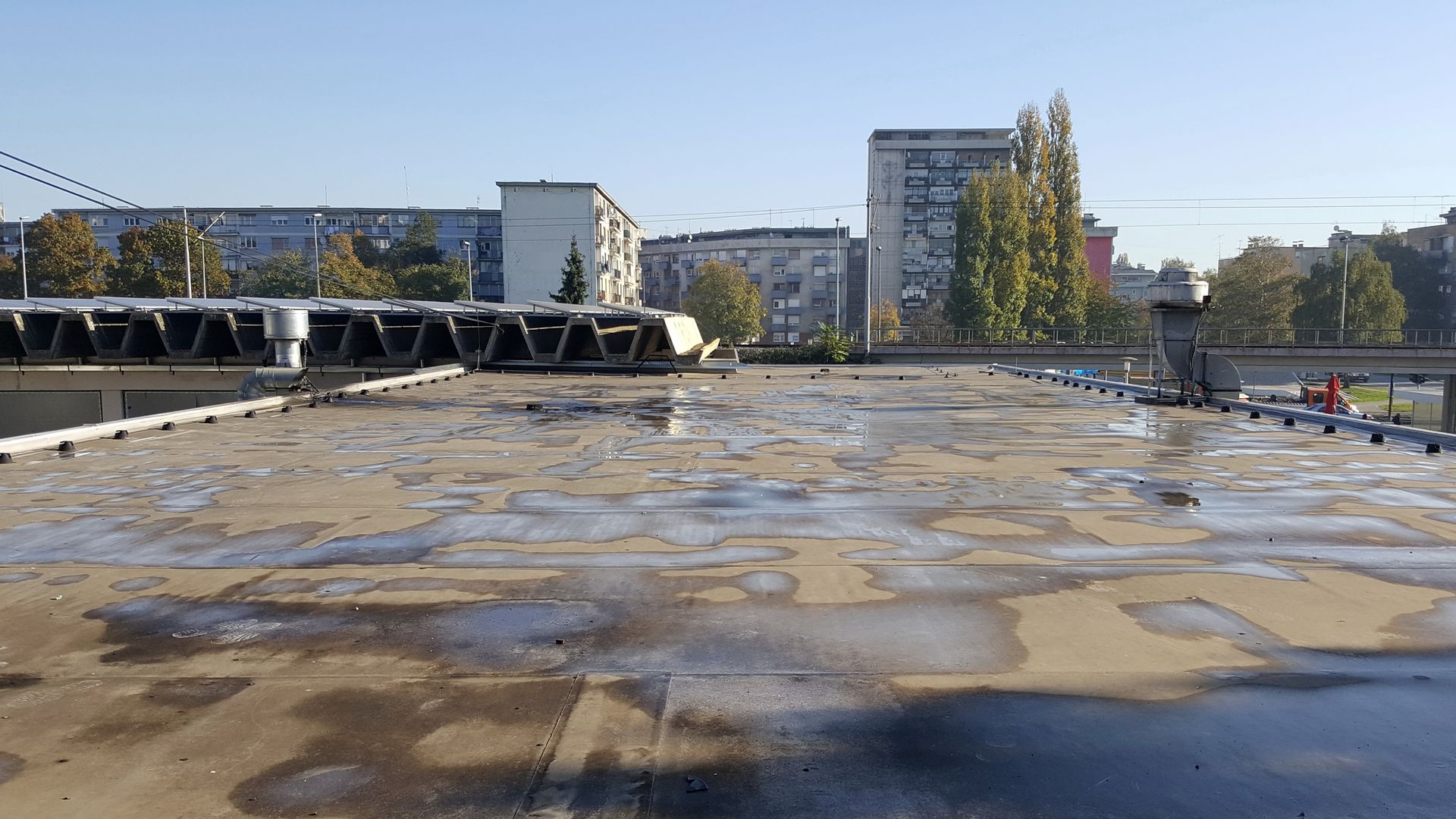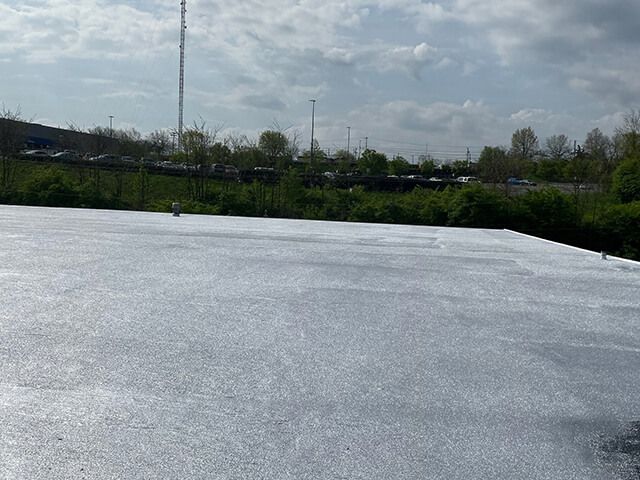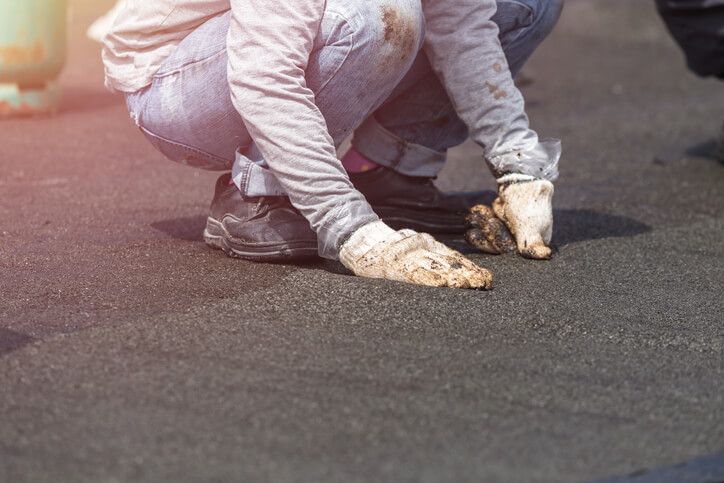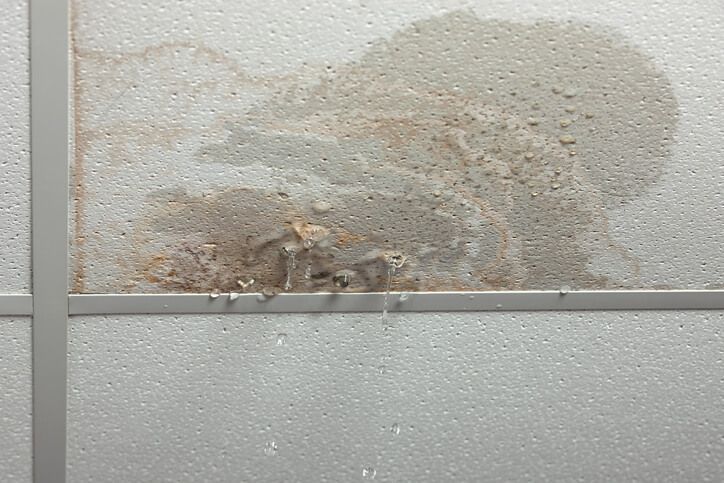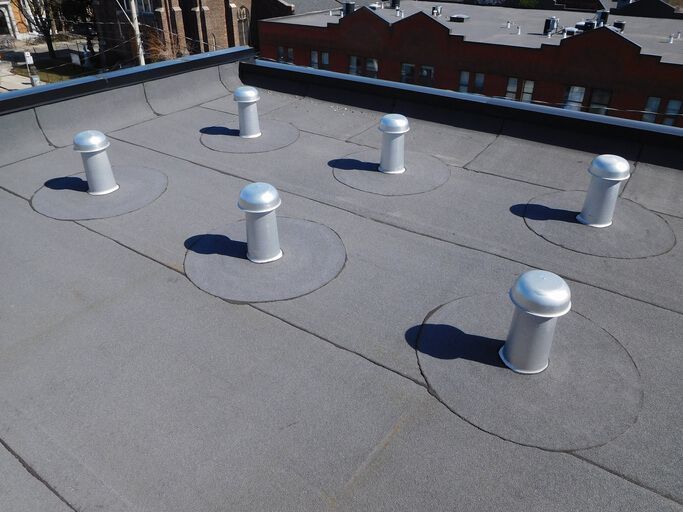Guide to Commercial Roofing and Weather
The weather can be unpredictable, and each season brings elements that can damage your commercial roof, making it crucial to understand how to prepare and protect your roof from hail, hurricanes, and snow.
At ACR1 , we’ve put together a guide to common weather occurrences, how they affect your commercial roofing, and what you can do to protect your roofing system from damage.
Hail & Storms
Hail is a common occurrence in the summer months and can cause minor to serious damage to your commercial roof. If you’ve experienced a storm of hail, it is crucial to understand the signs of roof damage which include:
Punctures, fractures, and dents
After a storm, there is a chance that you will see circular indentations or punctures on the surface of the roof. This can happen depending on the size and density of the hail and the material that your roof is made of.
Roofs made of aluminum are likely to dent, whereas asphalt roofs are likely to suffer punctures. For roofs composed of a PVC membrane, the strong molecular bond of the roof lessens the chance of dents or punctures. Keep in mind, though, that a strong enough storm of hail can eventually cause fractures.
Interior Water Stains
If your roof has been punctured by hail, you may have water from the storm leaking into the inside of the building. Look for stains on the walls, ceilings, and floors after a thunderstorm, and be sure to address any water damage as soon as possible to prevent mold growth.
Standing Water on the Roof’s Surface
Check your roof for standing water after a thunderstorm. If there is standing water on the roof 48-72 hours after the storm, you will likely have structural damage. Ponding water after a storm indicates that there is a structural issue with your roof that is preventing it from draining properly. If you see ponding water, call a commercial roofing company for an inspection.
How to Minimize Storm Damage on Your Commercial Roof
Unfortunately, you won’t be able to stop some of the damage that a severe storm can cause to your roof; there is a way to help prevent or minimize the damage to your commercial roof.
Upgrade Your Roofing Materials
For superior storm protection, it is recommended that you upgrade your roof to a monolithic roofing system. At ACR1, our Advantage Systems Commercial Roofing system is installed in one complete piece with no seams. This helps to prevent leaks, and since no cutting and gluing is needed, we avoid creating weak points in your roof.
Additionally, this roofing system is 3-4 times thicker than our competitors’ roofing materials to protect your roof from items falling onto or being thrown onto your roof and providing you with excellent protection from hail damage.
Should I Contact My Insurance Company After It Hails?
It is recommended that you contact your insurance company after a storm, no matter how severe the damage is. If you’ve inspected the roof and see that damage has occurred, be sure to document the damage with photos. Document everything you can about the damage using photos, as these photos will play a major role in the filing process with your insurance agent and adjusters.
Hurricanes
From roughly the beginning of June to the end of November, many areas are at risk for hurricanes. Even if you don’t live in a hurricane-prone area, the severe storms that can pass through your area can still bring strong winds, heavy rain, and flying debris that can cause damage to your roof. It Is critical to prepare your commercial roof to withstand hurricane season.
What Kind of Roof Damage Can a Hurricane Cause?
Typically, your commercial roofing system should be able to handle a regular storm with ease, whereas an extreme storm, like a hurricane, can put a lot of stress on your roofing system. This stress is especially heavy on the edges of the roof, where materials may have loosened. If you have a low-slope roof, it is at risk of damage to the seams, flashings, and corners.
Your roof may also be susceptible to major leaks if your drainage systems become obstructed or overwhelmed, causing water to pond on the roof. This can lead to interior leaks, which can compromise the structural integrity of the roof and your commercial building and may damage machinery, inventory, etc.
How to Prepare Your Roof for Hurricane Season
To prepare for hurricane season, the experts at ACR1 recommend:
Annual Roof Inspection and Maintenance
The best way to protect your roof is to have it inspected and maintained every year. This will allow you to repair any minor issues before they escalate, ensure that your drainage systems are working properly, and will also provide you with documentation and photos of your roof’s condition. You will want to have your roof inspected before June 1st, when hurricane season begins.
Call a Tree Service
If you have trees on your property, be sure to call a trusted professional to remove any limbs that could break off and damage your commercial roof.
Review Your Insurance and Warranties
Look at your commercial roof warranties and your insurance policies to ensure you have the coverage you need for hurricane season. If there are any lapses or gaps in coverage, be sure to resolve them.
Budget for Repairs
It is recommended that you develop a three-year spatial budget to provide you with the funds for severe storm damage.
Schedule Repairs or Replacements
If your roof requires repairs or if you plan to replace your commercial roofing system, be sure to contact ACR1 and have your repairs or replacement scheduled before the next hurricane season.
How to Prepare Your Roof A Day or Two Before the Storm
While it is crucial to prepare prior to hurricane season, there are also steps you should take to prepare your roof when the storm is a day or two away from reaching you. We recommend:
- Testing your drainage systems and removing any obstructions to prevent water from ponding on the roof.
- Check that all the AC units and other equipment are securely attached to the roof. Make sure the flashings are all securely attached as well.
- Inspect the roof for any debris or loose objects. Be sure to remove them so they don’t clog up your drainage systems or damage property by flying off of the roof. Make sure to take photos of this inspection as you may need “before” photos of your roof for insurance purposes.
- Cover any skylights with caps or plywood sheets.
We also recommend that you schedule a post-storm inspection to ensure you beat the post-storm rush for inspections and get a better spot in line.
What do I Do After the Hurricane Passes?
After the storm passes, you want to check for leaks on the interior of your building. If you see water stains on the ceilings, walls, or floors, don’t try to temporarily fix them yourself; instead, call ACR1 right away for inspection and repair. If the roof is severely damaged and poses a threat to people’s safety, be sure to call 911.
You will also want to contact your insurance company as soon as possible to begin your claim process for your commercial roof.
Snow
During the winter season, a flat roof can accumulate several feet of snow. This snow must be removed from the roof’s surface to prevent it from creating issues with your commercial roof. By thawing and refreezing, snow can damage the roof’s drainage system and can also block access to your commercial building’s major features.
Prior to the winter season, you can install snow protection features, and it is also recommended that you compose a snow removal plan.
Why Do I Need to Remove Snow from My Commercial Roof?
Major snowfall can lead to buildup on your flat roof, which can negatively affect not only the roof but the commercial building beneath it as well. This can damage the building and create safety hazards, opening you up to liability. We recommend removing snow from your commercial roof, which should be done with special care and strategy. Snow buildup can cause:
Damage and Safety Issues
After a snowfall, snow and ice can fall off of the edges of the roofing system if left uncollected. This can lead to ice and snow falling onto people and property below, causing harm to employees or the public and damaging our property. The roof membrane can also become damaged if snow or ice falls in heavy loads from higher surfaces onto lower roof surfaces.
Blocked Building Features and Systems
When snow collects on your commercial roof, it can block your access to a variety of systems and features, such as your plumbing vent and HVAC systems. Snow may also prevent these systems from working properly, and it can also block access to the roof, making snow removal difficult.
Roof Damage
Your roof’s membrane can become damaged by heavy snow accumulation due to the freeze and thaw cycle. The snow will melt throughout the day and then freeze over again at night. The water can get into cracks in the roof’s membrane. When the water freezes, it expands, which can worsen these cracks and other vulnerabilities in the roof.
Roof Collapse
If the snowfall exceeds the weight capacity of your roof, it can cause the roof to collapse, causing massive damage to your commercial roof while posing a serious risk to the safety of your employees. This is a rare occurrence, but it is a serious concern which is why snow management is crucial.
Drainage System Damage
When snow remains on the rooftop, it will melt and make its way into the external drainage system. This water will refreeze, expanding and damaging your drainage system.
What are the Signs My Building is Under Stress After a Snowstorm?
If your building is under stress by the snow load, you may notice
- Sagging ceilings or sprinkler lines and heads that appear lower than usual.
- Creaking, popping, and cracking noises.
- Water ponding on the roof can indicate drainage issues or sunken areas.
- Issues opening doors or windows. This may mean that the roof or wall has shifted from the snow’s weight.
- If the weight of the snow stresses the roof, you may notice cracks in the masonry, drywall, and other wall materials.
- If the roof or roof truss is sagging, it could indicate an issue with the roof membrane.
How Do I Know if the Snow Needs to Be Removed?
According to the Federal Emergency Management Agency (FEMA), if the snow load on your roof is close to the weight capacity of your commercial roof, it should be removed. The snow should also be removed if you are expecting more snow that could cause the snow load to exceed the roof’s weight capacity.
Even if the building can handle the snow load, snow that is at risk of melting and refreezing should be removed. Direct sunlight can melt the top layer of snow, which will then refreeze and make it difficult to remove the snow from the roof.
It is important to use a licensed roofing contractor to remove snow buildup from your roof. They will remain safe on the icy or snowy roof surface and know how to prevent damaging your roof membrane during the removal process.
Be sure to hire a professional for snow removal before winter to ensure you beat the winter rush.
How Can I Prepare My Commercial Roof for Snowfall?
We recommend that you prepare your commercial roof prior to the winter season to help minimize your risk of snow damage. Some things you can do to prevent damage include:
- Utilize wind baffles- These will help to prevent snow accumulation from occurring in your drainage systems, vents, and other entry points on the roof.
- Install snow guards- These can be used to protect your plumbing vents and other airways on your roof from being covered in snow.
- Have your roof inspected – In the fall, be sure to have a professional roof inspection so you can have any minor issues repaired before the snow comes.
- Make a map of the roof- To make your snow removal effective and efficient, it is crucial to map out your roof. Be sure to include the drainage system, roof features, and other areas where snow tends to build up.
Contact us today to learn more about how weather affects your roofing system and how our Advantage Systems Commercial Roofing System can provide you with a reliable and durable roofing option that can withstand the elements!
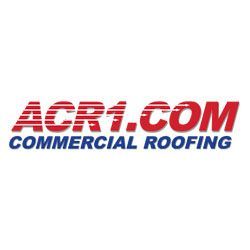
Author:
Floyd Mason
Born and raised in farming in Iowa
Worked in and around construction since 1977
BS in Corporate Finance and Financial & Estate Planning from Brigham Young University. Involved in Boy Scouts of America for more than 35 years, Scoutmaster 15 years Estimator, Project Manager, Sales Representative, Crew Leader, Laborer, Territory Manager, District Manager, Regional Manager, National Sales Manager,
ACR1.COM Sales & Marketing Manager since 2013.
